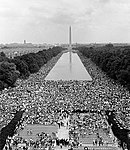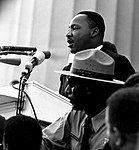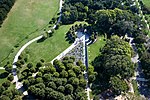2019 Salute to America

The 2019 Salute to America was an event arranged by the Trump administration held on Independence Day, July 4, 2019, in Washington, D.C. It took place at the National Mall and included presentations of U.S. military vehicles, an address by President Donald Trump from the Lincoln Memorial, flyovers by military aircraft, and a fireworks display. The event occurred alongside pre-existing annual Independence Day events such as the National Independence Day Parade and the PBS-televised A Capitol Fourth concert. It was the first time a U.S. president had addressed a crowd at the National Mall on Independence Day in 68 years. There was controversy leading up to the event. Trump's critics expressed concern that the celebration would be a political event reminiscent of his campaign rallies, especially in the early stages of his 2020 re-election campaign. Concerns were also raised over the involvement of the military, the distribution of VIP tickets to donors and members of the Republican Party, as well as the cost of the event. Trump's speech focused largely on praising the United States' cultural and military accomplishments and featured themes of American exceptionalism and patriotism.
Excerpt from the Wikipedia article 2019 Salute to America (License: CC BY-SA 3.0, Authors, Images).2019 Salute to America
Lincoln Steps, Washington
Geographical coordinates (GPS) Address Website Nearby Places Show on map
Geographical coordinates (GPS)
| Latitude | Longitude |
|---|---|
| N 38.8893 ° | E -77.0501 ° |
Address
Lincoln Memorial
Lincoln Steps
20418 Washington
District of Columbia, United States
Open on Google Maps









